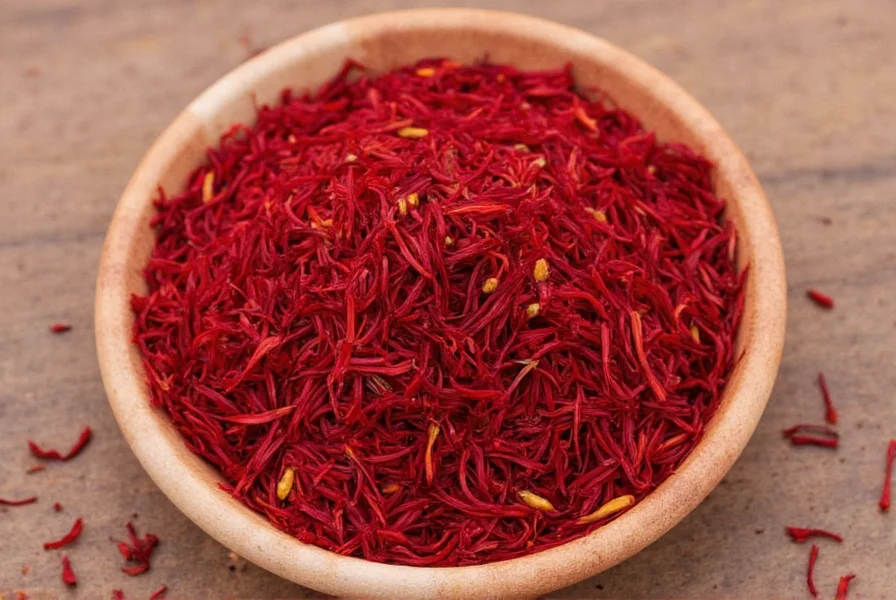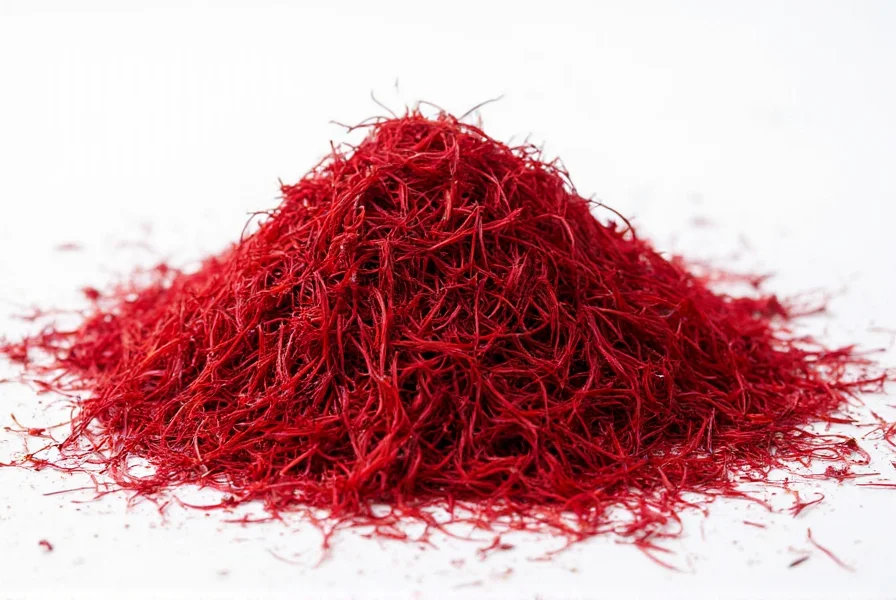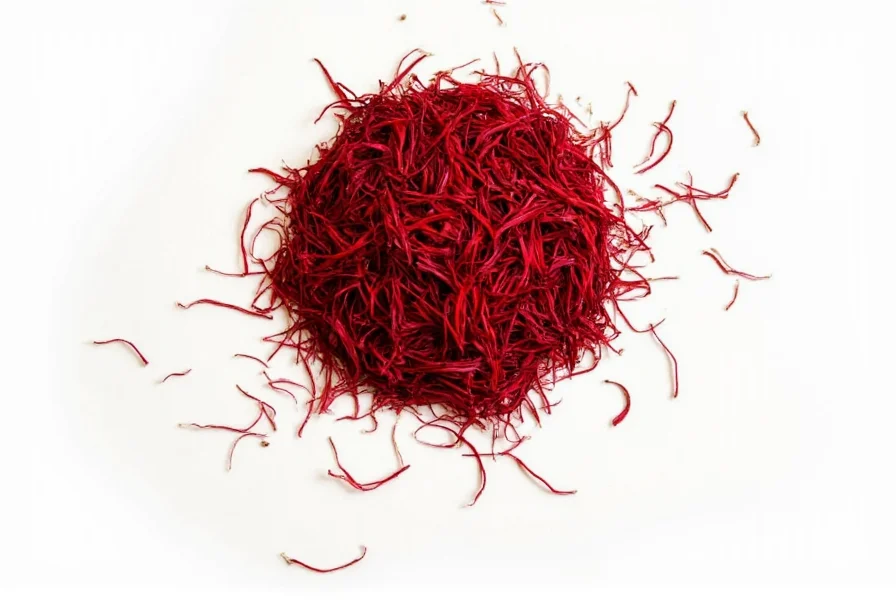Saffron's unique taste experience sets it apart as the world's most valuable spice. Understanding saffron taste characteristics helps both home cooks and professional chefs utilize this precious ingredient effectively. This comprehensive guide explores the nuanced flavor profile of genuine saffron, how it differs from counterfeit products, and practical applications that showcase its distinctive qualities.
Decoding Saffron's Complex Flavor Profile
Authentic saffron provides a multi-dimensional taste experience that evolves as it interacts with your palate. The initial impression features delicate floral notes similar to fresh hay, followed by subtle honey-like sweetness. As the flavor develops, you'll detect earthy undertones with a characteristic metallic hint that distinguishes genuine saffron from imitations.
The finish reveals saffron's signature mildly bitter quality—a crucial indicator of authenticity. This bitterness shouldn't be harsh or overwhelming but rather a refined counterpoint to the preceding sweetness. Premium saffron maintains remarkable balance between these contrasting elements, creating what culinary experts call "flavor harmony."
| Flavor Component | Description | Quality Indicator |
|---|---|---|
| Aroma | Floral, hay-like, with metallic hints | Strong, pleasant fragrance indicates freshness |
| Initial Taste | Honey-like sweetness, subtle floral notes | Bright, clean sweetness without artificial notes |
| Middle Notes | Earthy undertones, subtle grassiness | Complex development without flatness |
| Finish | Mild bitterness, lingering floral notes | Pleasant bitterness that doesn't overwhelm |
Factors Influencing Saffron's Taste Experience
Several elements affect how saffron expresses its flavor profile. Understanding these variables helps you select and use saffron effectively.
Quality Grading and Flavor Impact
Saffron quality directly correlates with taste intensity and complexity. The ISO 3632 international standard classifies saffron into four quality categories based on crocin (color), picrocrocin (taste), and safranal (aroma) content:
- Category I - Highest concentration of flavor compounds, delivering the most complex taste profile
- Category II - Good quality with noticeable flavor but less complexity
- Category III - Moderate flavor intensity, often with less balanced taste
- Category IV - Lowest quality with weak, sometimes musty flavor
Geographical Origin Differences
While all genuine saffron shares core flavor characteristics, regional variations exist:
- Iranian saffron - Typically offers the most intense flavor with pronounced floral notes
- Spanish saffron - Often features a more balanced profile with subtle earthiness
- Kashmiri saffron - Known for deeper color and slightly sweeter taste profile
- Greek saffron - Frequently exhibits stronger hay-like aroma notes

How Cooking Techniques Affect Saffron Taste
Understanding how saffron flavor changes with cooking helps maximize its potential in your dishes. Saffron's volatile compounds respond differently to various preparation methods:
Optimal Extraction Methods
For the most authentic saffron taste experience, proper extraction is crucial. The traditional method involves:
- Gently toasting threads (optional but recommended)
- Crushing threads to increase surface area
- Steeping in warm (not boiling) liquid for 15-20 minutes
- Adding both threads and liquid to your dish
This process preserves saffron's delicate flavor compounds while maximizing extraction. Using boiling water immediately can degrade some aromatic compounds, resulting in a less complex saffron taste profile in cooked dishes.
Temperature Sensitivity
Saffron's flavor compounds begin degrading at temperatures above 185°F (85°C). When incorporating saffron into hot dishes:
- Add saffron infusion during the final 10-15 minutes of cooking
- Avoid prolonged exposure to high heat
- For cold applications like ice cream, steep saffron in room temperature liquid
Common Misconceptions About Saffron Taste
Several myths persist about saffron's flavor that can lead to improper usage:
- "Saffron should taste strongly bitter" - High-quality saffron has only a subtle bitterness that balances the sweetness
- "More threads mean better flavor" - Excessive saffron creates imbalance; 0.05-0.1g typically suffices for 4 servings
- "Saffron tastes like iodine" - This indicates adulteration; pure saffron has no medicinal notes
- "Saffron loses all flavor when cooked" - Proper technique preserves 70-80% of flavor compounds
How Saffron Compares to Similar Spices
Understanding saffron taste compared to other spices helps contextualize its unique profile:
- Saffron vs turmeric - Turmeric offers earthy bitterness without saffron's floral complexity
- Saffron vs paprika - Paprika provides sweetness without saffron's distinctive metallic notes
- Saffron vs annatto - Annatto gives color but lacks saffron's nuanced flavor development
Unlike these substitutes, genuine saffron delivers a complete sensory experience where aroma, initial taste, middle notes, and finish create a harmonious progression.

Practical Tips for Experiencing Authentic Saffron Taste
To fully appreciate saffron's distinctive flavor profile, follow these evidence-based recommendations:
- Perform the water test: Genuine saffron releases color gradually over 15+ minutes
- Smell before purchasing: Authentic saffron has a sweet, floral aroma—not musty or medicinal
- Start with small amounts: 0.03g per serving allows you to appreciate subtle flavor notes
- Try in simple preparations first: Saffron rice or tea showcases pure flavor profile
- Store properly: Keep in airtight container away from light to preserve flavor compounds
When evaluating saffron taste, consider the complete sensory journey rather than isolated elements. The interplay between aroma, initial impression, development, and finish creates saffron's signature complexity that has captivated palates for millennia.
Conclusion
Saffron's distinctive taste profile represents one of nature's most sophisticated flavor compositions. By understanding its floral notes, subtle sweetness, earthy undertones, and delicate bitter finish, you can appreciate why this spice has maintained culinary prominence for centuries. Proper handling and preparation preserve saffron's complex flavor profile, allowing its unique characteristics to enhance dishes without overwhelming them. Whether you're exploring what saffron tastes like in traditional dishes or experimenting with modern applications, respecting saffron's nuanced flavor profile ensures optimal results.
Frequently Asked Questions
Does saffron taste bitter?
High-quality saffron features a subtle, pleasant bitterness that balances its floral sweetness. This mild bitterness appears in the finish and should never dominate the flavor profile. Excessive bitterness typically indicates poor quality or adulterated saffron. The bitterness serves as a counterpoint to saffron's honey-like notes, creating a complex flavor experience rather than a singular bitter taste.
How can you tell if saffron is real by taste?
Genuine saffron delivers a multi-stage flavor experience: initial floral sweetness, developing earthy notes, and a mild bitter finish. Real saffron produces a gradual color release in water (15+ minutes) while maintaining its characteristic aroma. Counterfeit saffron often delivers immediate, harsh bitterness or artificial sweetness without the nuanced progression of authentic saffron. The taste should be complex and balanced, not one-dimensional.
Why does my saffron taste like metal?
A subtle metallic note is actually characteristic of high-quality saffron and comes from natural compounds in the stigma. This note should be delicate and integrated with floral and honey flavors, not dominant or harsh. If the metallic taste overpowers other flavors, it may indicate improper storage (exposure to metal containers) or low-quality product. Properly stored saffron maintains a balanced profile where metallic notes complement rather than dominate the flavor experience.
Does saffron taste different when cooked?
Yes, saffron's flavor profile evolves when cooked. Heat transforms picrocrocin (the compound responsible for saffron's bitter taste) into safranal, enhancing the floral aroma while mellowing the bitterness. Properly cooked saffron develops richer, more integrated flavors compared to raw threads. However, excessive heat degrades flavor compounds, so adding saffron infusion during the final stages of cooking preserves optimal flavor. The taste becomes more rounded and integrated with other ingredients while maintaining its distinctive character.
How much saffron is needed to taste it in a dish?
Remarkably little saffron is needed to impart its distinctive flavor. For four servings, 0.05-0.1 grams (about 15-20 threads) typically suffices. High-quality saffron's flavor compounds are potent, and excessive amounts create imbalance rather than enhanced flavor. The threads should be properly extracted (steeped in warm liquid) to maximize flavor release. When used correctly, saffron enhances dishes with its complex profile without dominating other ingredients—a hallmark of its culinary value.











 浙公网安备
33010002000092号
浙公网安备
33010002000092号 浙B2-20120091-4
浙B2-20120091-4